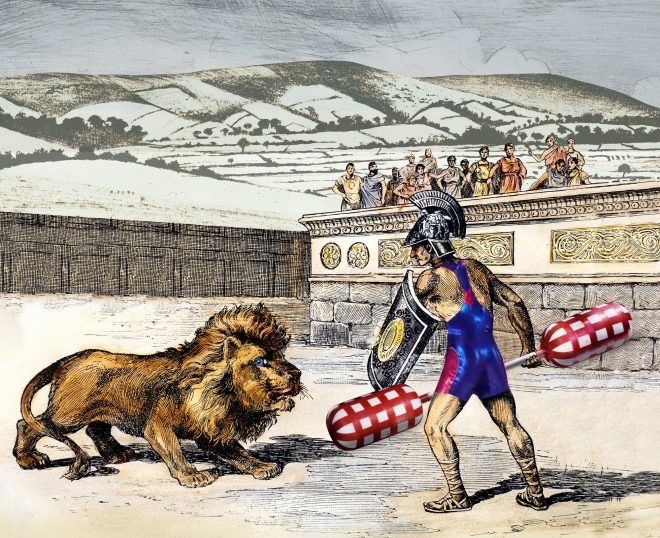Remnants of gladiatorial arena found in South Downs National Park
April 1, 2024

A Roman gladiatorial arena thought to date from 100AD has been discovered in the South Downs National Park.
Believed to be one of the UK’s most significant archaeological discoveries this century, the incredible find was made while work was being carried out in the garden of a private dwelling located between Chichester and Midhurst, in West Sussex.
As part of construction work, an unusual tooth bone was found by contractors which was later examined by zoologists and turned out to be a lion’s canine.
An archaeological test-pit was then set up at the location and further finds have been discovered, including the remnants of a spear and the wheel of a chariot.
Remains of an amphitheatre wall and a large seating area – made out of chalk and clay from the South Downs – have now been discovered and experts believe the arena may have been some 50m-wide and able to seat up to 500 people.
The exact location is not being given to protect potential further discoveries.
The “Chichester” settlement was first established as a winter fort for the Second Augustan Legion under Vespasian – the future emperor – shortly after the Roman invasion in AD 43. The site went on to become a thriving Romano-British settlement, Noviomagus Reginorum, and the town served as capital of the Civitas Reginorum, a client kingdom ruled by T. Claudius Cogidubnus, who many believe may have lived at the nearby Palace of Fishbourne. A basilica is thought to have been on the site of the cathedral in Chichester.
The gladiatorial arena was located away from the bustling populous centre and one theory is the presence of large predators, like lions and bears, may have been a reason in the interests of safety.
The action in the arena would have been far from safe though as bloodthirsty battles would have taken place on special days, especially ceremonial days, says lead archaeologist April Fletcher.
“Gladiators” may have been drawn from local Celtic populations or city dwellers that had committed crimes, she says.
“This is a hugely significant discovery and underlines just how important Noviomagus Reginorum was as a cultural centre for the Romans,” says April.
“The discovery of a lion’s tooth shows just how dangerous the floor of the gladiatorial arena would have been. Unlike the “Gladiators” of today with their crash helmets, lycra, safety nets, and inflatable pugil sticks, it was very often a fight to the death and often involved large predators and chariots. The gladiators would often be heavily armoured to withstand the blows that were being thrown at them.
“We’re excited to see what else we can find. This discovery underlines just what a jungle the South Downs National Park is for cultural heritage.”
And April added: “We’re hoping the ancient lion’s tooth and our discoveries can be incorporated somehow into the next series of Gladiators and are currently in talks with the producers. Watch this space!”
